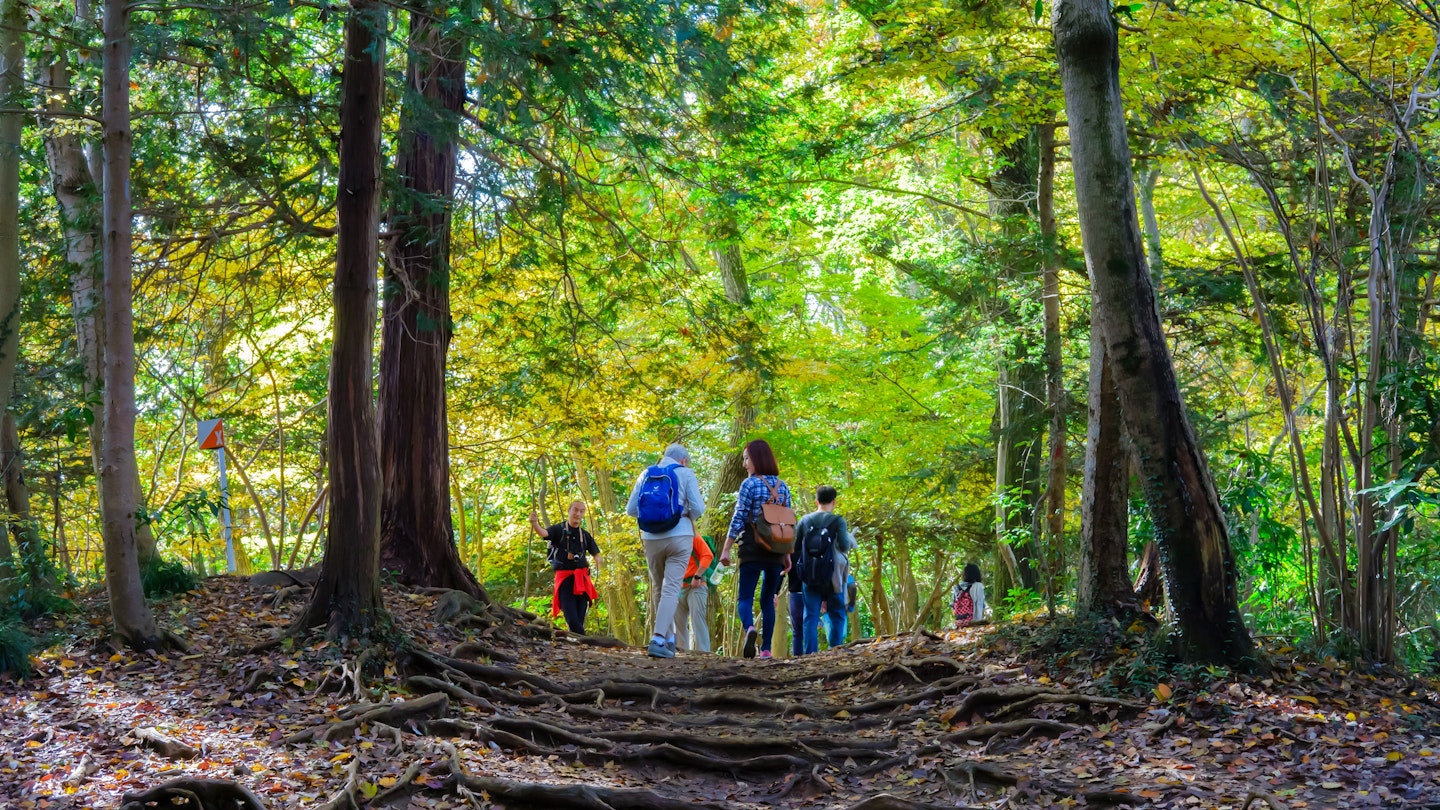
A beautiful, unassuming peak where hikers prioritize nature over selfies, Mt Takao could well be the perfect complement to the popular Mt Fuji hike and stands as one of Tokyo’s best day trips.
Shinto-Buddhist roots run deep on Mt Takao, yet it is the majestic cedar trees that accompany me as I hike toward the summit on a crisp winter morning.
I am climbing the 599m peak not simply for the elevation, but for the serene beauty it offers. Taking a swift 50-minute train ride from Japan’s capital Tokyo, I find that Mt Takao is free to climb. Although popular with locals, it remains overlooked by tourists drawn to the celebrity of Mt Fuji, resulting in low crowds and low costs. Blessed with tranquil trails, lush forests, and Shinto temples, Takao makes an easy and memorable addition to any Tokyo itinerary without straining budgets.

The Spirit of Takao
Upon arrival, the first impression of Takao is how it blends into the scenery. Nestled in the Kanto Mountain foothills, the mountain is surrounded by a quaint village filled with soba restaurants and sweet bun stalls.
While Takao may not boast the dramatic visuals of Mt Fuji, it compensates with a rich spiritual presence. Statues at the base of the mountain honor Jizō, the Buddhist deity who protects the spirits of deceased children, reminding visitors of the mountain’s ethos: self-reflection over taking selfies.
Ten trails weave up Takao, and I begin my journey on Trail 1, the most popular path adorned with kanji-inscribed stones, lantern boxes, and native cryptomeria trees. The trails vary in difficulty, ensuring that casual hikers and experienced trekkers alike can find a suitable route.

Trail 1 leads me to Yakuō-in, an impressive Shinto temple established in the 7th century, adorned with red arches and numerous prayer shrines nestled among towering oaks and cedars.
Early-morning temple visitors engage in prayers to Tengu, a mountain deity with a complex history. Some stories portray Tengu as a mischievous spirit, while others depict him as the ‘Slayer of Vanity.’ Acknowledging this, I decide to show my respect and dip my hand in the temizuya (font) of prayer water before bowing to his weathered statue.
I then switch to Trail 4, the Suspension Bridge Trail, which presents greater challenges than Trail 1. Crossing the 35m-long Miyama Bridge that spans a forested gorge, I navigate steep grades marked by bulging roots and slippery rocks. Trail 4 could very well be dubbed the Tengu Trail, as it certainly humbles any lingering vanity.

A Serene Summit
One of my favorite aspects of climbing Takao in the morning is that, within a metropolitan area of 14 million people, you can experience a wonderful natural environment almost in solitude.
The few hikers I encounter are older locals who diligently use sticks for walking, choosing contemplation over capturing selfies. They engage in quiet prayers instead of snapping photos. Although afternoon crowds of schoolchildren and local hiking groups will eventually disrupt the tranquility, for now, the mountain is the most serene place in the region.
Takao’s summit offers a humble and peaceful experience, exactly as intended by the mountain gods. The peak lacks ostentatious signs or whimsical directional posts; it only offers peace and a spectacular rising sun.
As the clouds dissipate on the horizon, Mt Fuji reveals itself, undoubtedly one of the world’s most beautiful mountains when observed from a distance, with its white snow cap and grand volcanic form. Fuji exudes a sense of parental oversight, almost questioning why one would choose to stand atop a lesser peak.
However, my ascent has demonstrated that – relative to its size – the minimalist charm of Takao beautifully complements the bucket-list allure of Mt Fuji. I bow once more and take in the breathtaking sunrise before descending from my tranquil high – or should I say low?





